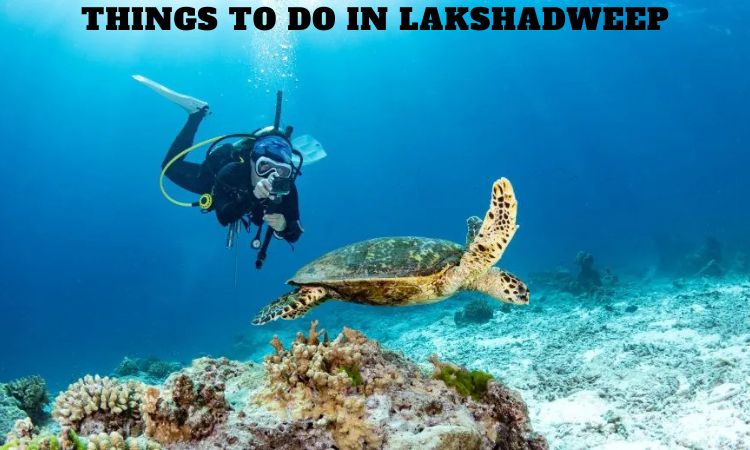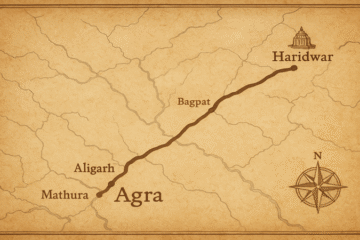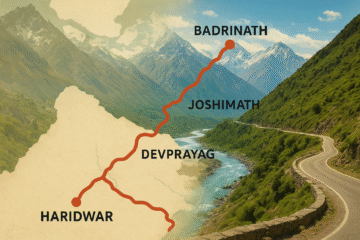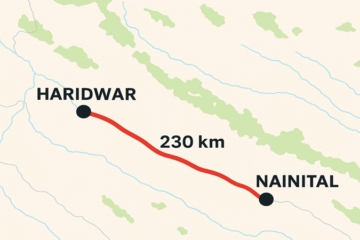
Table of Contents
Nestled in the Arabian Sea, approximately 200-440 kilometers off the southwestern coast of India, lies the breathtaking archipelago of Lakshadweep. A cluster of 36 enchanting coral islands, atolls, and submerged banks, Lakshadweep is a true tropical haven, offering a serene escape from the bustling mainland. The name itself, meaning “a hundred thousand islands” in Sanskrit, perfectly encapsulates the rich biodiversity and untouched beauty that awaits visitors. While getting to Lakshadweep requires a special permit, a journey to these pristine islands promises an unforgettable experience filled with adventure, tranquility, and cultural immersion.
The allure of Lakshadweep lies in its crystal-clear turquoise waters, vibrant coral reefs, powdery white-sand beaches, and abundant marine life. It’s a destination where time seems to slow down, allowing you to reconnect with nature and indulge in a myriad of captivating activities. If you’re planning a trip to this hidden gem, here’s a comprehensive guide to the things to do in Lakshadweep.
Embrace the Underwater Wonderland: Diving and Snorkeling
Lakshadweep is arguably one of India’s premier destinations for underwater exploration. The archipelago boasts some of the healthiest and most vibrant coral reefs in the world, with visibility often extending up to an impressive 45 meters.
Scuba Diving: Whether you’re a seasoned diver or a curious beginner, Lakshadweep offers incredible opportunities for scuba diving. Islands like Agatti, Bangaram, Kavaratti, Kadmat, and Minicoy are home to certified dive centers that provide equipment rental and guided dives.
Bangaram Island is often considered the crown jewel for diving, offering warm, clear waters teeming with colorful coral gardens, sea turtles, manta rays, and various species of reef sharks. Dive sites like “Bangaram Wall” and “Bangaram Lagoon” cater to all skill levels.
Kavaratti Island, the capital, is another excellent spot, known for its rich underwater life, beautiful coral formations, and abundant fish.
Kadmat Island is a diver’s paradise with its long, narrow lagoon and diverse marine habitat. “Kadmat Reef” and “Kadmat Wreck” offer unique diving experiences.
Minicoy Island, the southernmost atoll, provides access to some of the most untouched dive sites, with excellent visibility perfect for underwater photography.
Snorkeling: For those who prefer to stay closer to the surface, snorkeling is an equally rewarding activity. The shallow, calm lagoons are perfect for observing the kaleidoscopic world beneath the waves. You can easily spot colorful fish, delicate coral formations, and even small reef sharks in the crystal-clear waters of Agatti, Kalpeni, and Bangaram. Many resorts and tour operators offer glass-bottom boat tours, allowing you to witness the marine beauty without getting wet.
Thrilling Water Sports and Adventures
Beyond diving and snorkeling, Lakshadweep offers a wide array of water sports to get your adrenaline pumping or simply enjoy the serene waters.
Kayaking and Canoeing: Glide across the tranquil lagoons in a kayak or canoe, exploring hidden coves and remote beaches. The calm waters around islands like Kalpeni and Minicoy are ideal for these activities, even for beginners.
Jet Skiing: For a burst of speed and excitement, hop on a jet ski and skim across the open waters.
Windsurfing and Sailing: Harness the wind and experience the thrill of windsurfing or enjoy a leisurely sail across the pristine lagoons.
Parasailing: Soar high above the turquoise waters and enjoy breathtaking panoramic views of the islands from a parasail.
Fishing: Lakshadweep is a haven for fishing enthusiasts. Deep-sea fishing expeditions are popular, with opportunities to catch barracuda, sailfish, yellowfin tuna, and even sharks. Kadmat and Minicoy are particularly renowned for their fishing opportunities. You can also try your hand at traditional lagoon fishing.
Glass-Bottom Boat Rides: For a more relaxed experience, take a glass-bottom boat ride to marvel at the vibrant marine life and coral reefs without entering the water. These are widely available, especially around Kavaratti.
Island Hopping: With numerous islands, atolls, and submerged banks, island hopping is a must-do. Each island has its unique charm and attractions.
Agatti Island: Often the gateway to Lakshadweep (it has the only airport), Agatti is known for its serene beaches and vibrant marine life.
Minicoy Island: The second-largest island, famous for its distinct culture (influenced by the Maldives), traditional villages, and an old lighthouse built by the British.
Kalpeni Island: Known for its massive coral debris, resulting from a severe storm in 1847, and for its progressive society, being the first island to send girls to school. It’s also great for snorkeling and kayaking.
Kavaratti Island: The administrative capital, offering a blend of natural beauty and cultural insights. Visit the Kavaratti Aquarium and the Ujra Mosque.
Kadmat Island: An elongated island with a stunning lagoon on one side and an expansive reef on the other, making it perfect for watersports.
Bangaram Island: An uninhabited island renowned for its pristine beaches, clear waters, and fantastic diving opportunities. It’s also one of the few islands where alcohol is permitted.
Pitti Island (Pakshipitti): A small, uninhabited coral islet declared a bird sanctuary, ideal for birdwatching.
Andrott Island: One of the largest islands, known for its historical significance and a lighthouse.
Immerse in Culture and Local Experiences
Beyond the aquatic adventures, Lakshadweep offers glimpses into a unique island culture and lifestyle.
Visit Local Villages: Explore the traditional island villages, interact with the friendly locals, and learn about their customs and traditions. You’ll find a strong influence of Kerala’s culture due to geographical proximity.
Explore Architectural Wonders: Discover the unique architecture, particularly the traditional mosques found on various islands. The Kalpeni Juma Mosque and Ujra Mosque in Kavaratti are notable examples, showcasing intricate wood carvings and Malabar architectural styles.
Marine Museum (Kavaratti): Delve into the rich marine history and biodiversity of Lakshadweep at the Marine Museum in Kavaratti. It houses a fascinating collection of artifacts, ancient coins, pottery, and exhibits on the region’s maritime heritage and marine creatures.
Lighthouses: Visit the historic lighthouses on Agatti and Minicoy Islands, which offer panoramic views of the surrounding seas and islands. The Minicoy Lighthouse, built in the early 1880s by the British, is still operational.
Coir Handicrafts: Witness the traditional art of coir making, a primary occupation for many islanders. You can see how coconut husks are transformed into ropes, mattresses, and various handicrafts.
Palm Leaf and Seashell Crafts: Observe or purchase beautiful handicrafts made from palm leaves, such as mats, hats, and bags. The abundance of seashells also leads to exquisite seashell and coral jewelry and other decorative items.
Traditional Dance Forms: If you’re lucky, you might witness traditional folk dances like Kolkali and Parichakali, performed with sticks and shields, respectively. The Lava dance, popular on Minicoy Island, is performed by male dancers during festivities.
Savor the Local Cuisine
Lakshadweep’s cuisine is a delightful fusion of fresh seafood and tropical flavors, heavily influenced by Kerala’s culinary traditions. Coconut is a staple ingredient, used in various forms – coconut oil, milk, and grated coconut – lending a unique tropical flair to many dishes.
Seafood Delicacies: Indulge in an array of fresh seafood. Fried and barbecued fish are widely available.
Kavaratti Biryani: A must-try, often loaded with both meat and seafood, seasoned with saffron.
Mus Kavaab: A Minicoy specialty featuring boneless cubes of tuna fish cooked in a spicy curry base.
Tuna Thoran: Fresh tuna marinated with local spices, ginger-garlic paste, grated coconut, and chili.
Octopus Fry and Lobster Masala: For adventurous eaters, these offer unique and flavorful experiences.
Kooni Curry: A light and fragrant curry made with tiny shrimp in a coconut sauce.
Vegetarian Options: While seafood dominates, you’ll also find vegetarian dishes like Kurukku Kalan (a raw banana dish with Indian spices and coconut curry).
Coconut Rotti: A traditional bread made with rice flour and grated coconut, perfect with curries.
Refreshing Drinks: Enjoy fresh coconut water, readily available throughout the islands.
Relaxation and Serenity
Beyond the adventures, Lakshadweep is also about unwinding and soaking in the tranquil atmosphere.
Beach Relaxation: Simply relax on the pristine white-sand beaches, soak up the sun, and enjoy the calming sound of the waves. Agatti, Bangaram, and Thinnakara beaches are perfect for leisurely strolls and peaceful moments.
Sunset Cruises: Embark on a sunset cruise to witness the breathtaking hues of the sky as the sun dips below the horizon, painting a spectacular backdrop over the Arabian Sea.
Ayurvedic Massages: Some resorts offer Ayurvedic massages, providing a rejuvenating experience amidst the serene island setting.
Bird Watching and Turtle Spotting: Explore the lush forests and mangrove habitats to spot a variety of bird species, including migratory birds. On some beaches, you might even witness the nesting and hatching of endangered sea turtles.
Important Considerations for Your Trip
Permit Required: All tourists, including Indians, require a special permit to visit Lakshadweep. For foreigners, entry is generally restricted to Agatti, Bangaram, and Kadmat Islands, and pre-booked accommodation is often a precondition for the permit.
Best Time to Visit: The ideal time to visit Lakshadweep is from October to mid-May, when the weather is pleasant with calm, clear waters. Monsoon season (mid-May to September) brings heavy rainfall, high humidity, and limited activity options, making ship travel difficult.
Getting There: Lakshadweep can be reached by air (flights from Kochi to Agatti) or by ship (from Kochi to various islands).
Limited Infrastructure: While tourism is growing, Lakshadweep is not a budget backpacker destination. Tourist infrastructure like hostels and extensive public transport is limited. Most travel within islands is by foot or hired bicycle due to their small size.
Alcohol Restrictions: Alcohol is generally prohibited in Lakshadweep, with the notable exception of Bangaram Island.
Accommodation: Accommodation options range from government-run resorts to privately owned beachside stays, with most packages including meals. It’s advisable to book well in advance, especially during peak season.
In conclusion, Lakshadweep is a true paradise for those seeking a unique blend of adventure, natural beauty, and cultural discovery. From exploring the vibrant underwater world to relaxing on secluded beaches and immersing yourself in the local way of life, the things to do in Lakshadweep promise an unparalleled experience that will leave you with cherished memories for a lifetime.
Frequently Asked Questions (FAQs)
1. Do I need a permit to visit Lakshadweep?
Ans. Yes, all tourists, including Indian citizens, require a special entry permit to visit Lakshadweep. Foreign nationals generally have more restrictions and are usually limited to specific islands like Agatti, Bangaram, and Kadmat, often requiring pre-booked accommodation as part of their permit application.
2. What is the best time to visit Lakshadweep?
Ans. The best time to visit Lakshadweep is from October to mid-May. During these months, the weather is pleasant, the skies are clear, and the sea is calm, making it ideal for water sports and island hopping. The monsoon season (mid-May to September) brings heavy rainfall and rough seas, which can disrupt travel plans and limit activities.
3. How do I get to Lakshadweep?
Ans. The primary ways to reach Lakshadweep are:
- By Air: Flights operate from Kochi (Kochi International Airport – COK) to Agatti Island (Agatti Aerodrome – AGX), which is the only airport in Lakshadweep. From Agatti, you can take boats or ferries to other islands.
- By Ship: Passenger ships operate from Kochi to various islands in Lakshadweep. This is a longer journey but offers a different experience.
4. What are the main activities or “things to do in Lakshadweep”?
Ans. Lakshadweep is famous for its water-based activities. The main things to do in Lakshadweep include:
- Scuba Diving and Snorkeling (exploring vibrant coral reefs)
- Kayaking, Canoeing, and Paddleboarding
- Jet Skiing, Windsurfing, and Parasailing
- Deep-sea Fishing
- Island Hopping to explore different islands like Bangaram, Kadmat, and Minicoy
- Relaxing on pristine white-sand beaches
- Visiting lighthouses and local villages.
5. Is alcohol allowed in Lakshadweep?
Ans. No, alcohol is generally prohibited in Lakshadweep. The only exception is Bangaram Island, where some resorts might serve alcoholic beverages to tourists.
6. What kind of accommodation is available in Lakshadweep?
Ans. Accommodation in Lakshadweep is primarily in government-run resorts and a few privately operated beachside resorts. Options range from basic cottages to more comfortable rooms. Due to limited options, it’s highly recommended to book your accommodation well in advance, especially during peak season. Most packages include meals.
7. Is Lakshadweep suitable for budget travelers?
Ans. Lakshadweep is generally not considered a budget-friendly destination. The costs of permits, flights/ships, and accommodation, combined with limited local transportation options and the remote nature of the islands, make it a relatively expensive travel experience compared to mainland India.
8. What should I pack for a trip to Lakshadweep?
Ans. You should pack light, breathable clothing (cotton or linen), swimwear, reef-safe sunscreen, a wide-brimmed hat, sunglasses, insect repellent, a first-aid kit, comfortable sandals or water shoes, and any personal medications. Don’t forget your camera and waterproof phone pouch!
9. Are there ATMs or places to exchange currency in Lakshadweep?
Ans. ATMs are very limited, primarily found only on Kavaratti Island. It is highly advisable to carry sufficient cash for your expenses. Currency exchange facilities are virtually non-existent, so ensure you exchange currency before arriving in Lakshadweep. UPI payments might be accepted in some larger establishments, but cash is king.
10. Is Lakshadweep a good destination for families with children?
Ans. Yes, Lakshadweep can be a wonderful destination for families. The calm, shallow lagoons are safe for children to swim and snorkel. Many resorts offer family-friendly activities, and the serene environment provides a great opportunity for families to relax and bond amidst nature. However, access to advanced medical facilities is limited, so plan accordingly.


